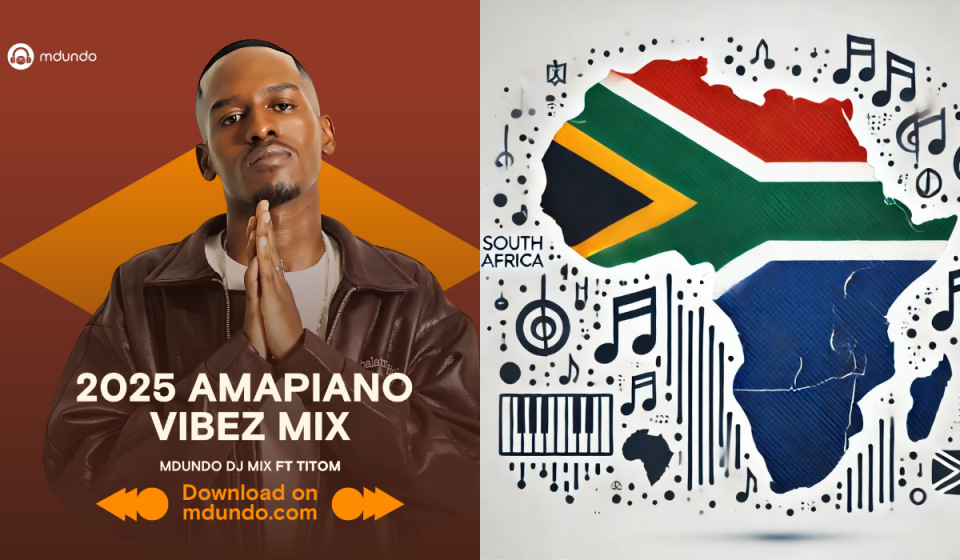Who Owns Amapiano?
21 January 2025

[Image:Instagram]
Writer: Linda Mzapi
Download TSA Episodes On Mdundo.com
It’s a tangled narrative, attempting to sanitize the politics surrounding the birth of Amapiano. Since the genre’s surge in popularity in 2017, debates have swirled about when it truly began and who ignited its rise.
On one hand, origin stories are often little more than marketing tools—artists vying to stake their claim on the fertile ground of a new genre. On the other hand, the desire to be acknowledged as “the first” can be a legitimate call for recognition in a still-evolving history.
Amapiano, the electrifying genre that has captivated dance floors worldwide, stands as one of Africa's most celebrated cultural exports. Its unique blend of deep house, jazz, and kwaito—marked by resonant basslines and soulful piano melodies—has turned it into a global phenomenon. Yet, its origins remain a hotly contested topic. While South Africa is widely acknowledged as Amapiano’s birthplace, competing claims have emerged, most notably from Nigeria.
The Birthplace of Amapiano
Most music historians and enthusiasts agree that Amapiano emerged from South Africa’s townships in the early 2010s, particularly in Gauteng Province, encompassing Pretoria and Johannesburg. The genre evolved as an offshoot of kwaito and deep house, two styles deeply rooted in South African musical culture.
Pioneering DJs and producers such as Kabza De Small, DJ Maphorisa, and MFR Souls played a pivotal role in shaping the Amapiano sound. The term “Amapiano” itself—Zulu for “the pianos”—is a nod to the genre’s signature melodic, piano-driven tunes. Early tracks fused kwaito’s rhythmic vitality with jazz-infused piano riffs, creating a distinctly South African vibe.
Amapiano’s grassroots popularity was fueled by the local taxi culture, where minibus drivers blared the genre’s infectious beats, transforming their vehicles into mobile dance parties and spreading the sound across neighborhoods.
A Counterclaim to Influence
While South Africa’s dominance in Amapiano’s genesis is undisputed, Nigeria has recently positioned itself as a significant player in the genre’s evolution. Nigerian artists argue that their experimentation with house music and afrobeat elements laid some groundwork for Amapiano’s broader appeal.
Critics of this claim argue that Nigeria only embraced Amapiano after it gained prominence in South Africa. Indeed, prominent Nigerian artists such as Davido, Wizkid, and Burna Boy have incorporated Amapiano elements into their music. Tracks like Davido’s remix of Focalistic’s “Ke Star” and Burna Boy’s forays into Amapiano-infused beats showcase the genre’s influence on Nigerian music—but as an adoption rather than an invention.
The Broader African Context
The conversation doesn’t stop with South Africa and Nigeria. Across the continent, Amapiano has been embraced and reinterpreted, with countries like Kenya, Tanzania, and Zimbabwe adding their distinct flavors. Tanzanian and Kenyan producers, for example, have seamlessly integrated Amapiano with bongo flava and genge tones, respectively, while Zimbabwean DJs have contributed to its stylistic evolution.
As Amapiano’s global footprint expands, international artists are blending the genre with their own styles, further blurring its origins. Yet, South Africa remains the creative epicenter, with Pretoria often referred to as the "capital" of Amapiano.
Cultural Exchange or Appropriation?
The debate over Amapiano’s origins underscores a broader dialogue about cultural exchange versus appropriation in African music. Music, by its nature, transcends borders and evolves through collaboration. Genres like afrobeats, kwaito, and bongo flava have long influenced and been influenced by one another, reflecting Africa’s interconnected cultural fabric.
South African artists and fans often view Amapiano as a national treasure, a homegrown triumph deserving of protection and recognition. Meanwhile, Nigerian artists see their integration of Amapiano into afrobeats as a celebration of the genre’s unifying power across the continent. This tension highlights the delicate balance between celebrating shared heritage and preserving the authenticity of a genre’s roots.
A Global Celebration
Regardless of its disputed origins, Amapiano’s meteoric rise on the global stage is an undeniable win for African music. From London to New York, the genre’s basslines and soulful melodies now dominate clubs and festivals. High-profile collaborations, such as rumored projects with Drake and Beyoncé’s nods to African rhythms, have further propelled Amapiano’s status as a cultural phenomenon.
Amapiano: Africa’s Shared Victory
Ultimately, Amapiano’s story reflects Africa’s boundless creativity and resilience. While South Africa remains its undisputed birthplace, the contributions of other countries have enriched its evolution and amplified its global appeal.
Rather than focusing solely on the debate, we should celebrate Amapiano as a testament to Africa’s cultural richness—a genre that unites, inspires, and transcends borders. Its success belongs not just to one nation but to a continent and a world that dances to its beat.
Catch Mdundo Podcast Here





Leave your comment